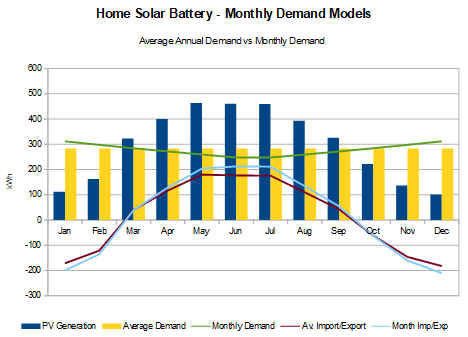Home Solar Batteries: 2.2 Modelling Energy Demand
- Opinion
- Mar 12, 2019
- 2 min read

Introduction
This post specifically addresses the charging of domestic battery systems using solar PV and forms part of a series of entries looking to establish a reasonable view as to how the combination of solar PV and battery storage system should be modelled to ensure that information available to consumers should be considered accurate enough to establish a reasonable justification for investment in storage technologies.
If this is the first time you've accessed this information it is recommended that all of the relevant posts are considered in order through accessing the 'relevant posts' links
Investigation
Within posts in section 2.1 of this series we looked at various data timescales available to model solar PV generation, so in this section we'll look to address household energy demand along the same lines,
This post summarises the available options which can be used to model household energy demand which can be ultimately be used to analyse & model the expected performance level of any given battery storage system operating alongside a solar PV installation.
Behind each of the summary headings below lies a detailed explanation which is available via links provides as 'Related Posts'
2.2a - Annual / Quarterly Supply

Here we will consider the option of modelling the performance of the combination of solar PV & domestic battery storage technologies based on long term data sources which are available to households
2.2b - Monthly & Daily Supply

Within this investigation we consider options available to model household consumption relative to on-site solar PV generation on both monthly & derived daily data basis.
2.2c - Hourly Supply (Including Smart Metering HHM)

At this level we look into the interrelationship between solar PV generation and household demand within a day, using both hourly recorded data & that available from smart meters.
The analysis includes consideration of the effect on performance modelling of short term generation & demand variability.
2.2d - High Resolution

A view of modelling accuracy when employing solar PV generation & demand data describing 5 minute time-slices over two consecutive days of comparative data.
Summary
Similar to the conclusion reached when looking at solar PV data modelling battery charging, it becomes apparent the smoothing effect created by pooling energy demand data into larger time-slice buckets also has a considerable effect on the potential for the model to provide accurate results.
As shown through the various model options discussed above, the interrelationship between demand and supply data is highly relevant, even being demonstrably so at the sub-hourly level.
Any model to be considered accurate enough to base battery storage purchase justification decisions on must carefully consider this data interrelationship, either through employing high resolution data directly, or applying relevant pre-analysed modification factors to adjust for the inaccuracy of the model's simulation results.
This is part of a series looking at domestic Batteries
Please read in conjunction with other 'Related Posts' by using the links provided
Interested in what you've just read?
Have a look around the site & keep returning, it'll grow!























Comments